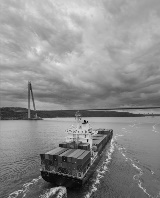Casualty Insurance
Amwins delivers primary and excess casualty insurance solutions for your clients' most complex risks.

Casualty Insurance
Amwins delivers primary and excess casualty insurance solutions for your clients' most complex risks.

Custom solutions and market clout at your fingertips
With more than 1,000 dedicated casualty professionals across the country, collaboration is in our DNA. Amwins delivers trusted consultation, market access and creative program structures to place coverage for even the most complex and layered accounts —providing value-added resources, unmatched service and expertise every step of the way.
$11.3B
annual U.S. premium placements
1,000+
dedicated professionals
700
casualty markets we place business with
Casualty areas of specialty
Data & Analytics
We harness our robust, proprietary data (Amwins DNA) to provide benchmarking and other useful reports, develop innovative products, and much more.
Claims advocacy
In-house claim advocates that help resolve coverage disputes, service issues, valuation discrepancies, and payment challenges.
Custom product development
Casualty resources + insights
Stay up to date on emerging casualty insurance trends and topicsMarine Protection & Indemnity Insurance – Overview and Coverage Concerns
There are three basic types of marine insurance: Hull and Machinery, Cargo and Protection & Indemnity (P&I) insurance. In this article, we focus on P&I.
The primary providers of P&I insurance for oceangoing vessels are so-called “Clubs,” mostly overseas based assessable mutual associations controlled by the vessel owners they insure. The Clubs can assess members for additional premium if the original premium is insufficient to pay the Club’s losses and expenses for a coverage period. Most of the Clubs are based in London. In the U.S., conventional insurance companies write P&I insurance mainly on inland and coastal waters.
What is P&I Insurance?
P&I insurance is liability coverage for vessel owners, subject to many exclusions and special conditions. The P&I Clubs do not use a standardized form of policy. Each Club has its own “Club Rules.” The domestic U.S. conventional P&I market mostly uses forms called SP-23, SP-38 and the AIMU (American Institute of Marine Underwriters) clauses.
The typical P&I policy covers (again, with exclusions and conditions): loss of life, injury and illness of crewmembers, passengers, and other third parties, damage to cargo on board the vessel, damage to other floating objects not caused by collision, wreck removal costs, collision liability, damage to fixed objects, repatriation expense, damage to any other property, fines and penalties, costs of resisting mutiny or misconduct, quarantine expenses, putting in costs, cargo’s proportion of general average, and defense costs.
The most significant and costly exposure covered by P&I insurance is liability for loss of life, injury or illness, particularly the injury or death of crewmembers. P&I insurers cover their Assureds with very high limits of liability. The need for these high limits was the original motivating factor for the formation of the Clubs.
The most significant and costly exposure covered by P&I insurance is liability for loss of life, injury or illness, particularly the injury or death of crewmembers. P&I insurers cover their Assureds with very high limits of liability. The need for these high limits was the original motivating factor for the formation of the Clubs.
What about instances where the P&I insurer declines defense and indemnity in cases involving injuries to crewmembers?
We have a perfect example of how a broad interpretation of crewmember status can have the effect of depriving the employer of the insurance coverage it has paid for and relied on. The case is Larry Naquin, Sr. v. Elevating Boats, LLC, decided by the U.S. Court of Appeals for the Fifth Circuit (states of Texas, Louisiana and Mississippi) on March 10, 2014.
NOTE: Keep reading until the end. While the Naquin case illustrates what can (and did) happen when an overly broad interpretation of crew status is applied to a question of P&I coverage to the detriment of the maritime employer, recent events indicate that the law is changing in this area.
The injured worker in the Naquin case had the job title of vessel repair supervisor. He supervised the maintenance and repair of his employer’s (mostly docked) fleet of lift boats, spending about 70% of his work time on board the vessels while they were typically moored in a shipyard channel. The worker’s duties consisted of inspecting, cleaning, painting, replacing defective or damaged parts, performing engine repairs, going on occasional test runs and operating the vessels’ marine cranes and jack up legs. The remaining 30% of his work time was spent in the shipyard’s fabrication shop or operating its land-based crane. In other words, he was a ship repair worker.
The injury occurred while the plaintiff was operating a land-based crane. The crane toppled over for reasons that were never identified. Liability for negligence was assigned to the defendant under the tort doctrine of res ipsa loquitor; something obviously went wrong, and someone had to have been negligent.
The federal district court jury found that this ship repair worker met seaman status as a member of the crew of the employer’s vessels, and this finding was affirmed by the federal Fifth Circuit Court of Appeals.
This decision represents a broad interpretation of the phrase, “master or member of a crew of any vessel”, which is the definition, taken from language in the Longshore and Harbor Workers’ Compensation Act, used for “seaman.”
One of the (unintended) consequences of this decision resulted when the employer’s P & I insurance carrier declined to provide defense and indemnity based on the language of the policy.
The indemnity provision at issue: “Subject to all exclusions and other terms of its Policy, the Underwriters agree to indemnify the Assured for any sums which the Assured, as owner of the vessel, shall have become liable to pay, and shall have paid, in respect of any casualty or occurrence during the currency of the Policy, but only in consequence of any other matters set forth hereunder ….”
When the employer sued the insurance carrier to enforce its coverage, summary judgment was granted to the insurance carrier. The court found no coverage under the P&I Policy, as there was no causal connection between the “owner of the vessel” and the land based accident. The Court found that the “as owner of the vessel” and the “any casualty or occurrence” language must be read together. There must be some causal operational relationship between the vessel and the injury or there is no P&I coverage.
Are there any new elements to consider?
Then came the case of Gilbert Sanchez v. Smart Fabricators of Texas, LLC, 842 F.3d 564 (5th Cir.) May 11, 2021. After originally affirming seaman status for Mr. Sanchez, a land-based welder, the Fifth Circuit recognized that perhaps it had gone too far in applying the Chandris test to give seaman status to what were essentially land-based workers. In an en banc decision, the court established new elements to consider when evaluating the nature element of the test for seaman status, including:
- Does the worker owe his allegiance to a vessel rather than a shoreside employer?
- Is the work sea-based or does it involve sea-going activity?
- (a) Is the worker’s assignment to a vessel limited to the performance of a discrete task after which the worker’s connection to the vessel ends, or (b) does the worker’s assignment include sailing with the vessel from port to port or location to location?
Recent jurisprudence has indicated that the Sanchez factors will be used going forward to evaluate a worker’s status, whether sea-based or land-based, which in turn will have a significant impact on the choice of an injured worker’s remedies. Presumably we will see fewer successful seaman’s lawsuits under the Jones Act and General Maritime Law by land-based workers more properly covered by the Longshore and Harbor Workers’ Compensation Act, a federal workers’ compensation law covering maritime workers.
Identifying correct maritime exposures can be problematic for employers, and it is essential for employers to seek expert advice for any operations near navigable waters or involving vessels. AEU can provide this advice.
- Jack Martone, SVP, The American Equity Underwriters
- freight forwarder
- logistics
- Marine & Logistics
- Property
- Marine and Logistics
- Property & Casualty
- Workers' Compensation
Filling excess placements despite changes in exposure.
When an insured with five New York City hotels converted operations to COVID-19 shelters for the local homeless population, the change in exposure threw a wrench in the renewal. While the general liability carrier stayed on the account, the excess carrier discontinued coverage. The retail agent contacted Amwins to fill the excess coverage for these locations.
With a local government agency managing and operating these shelters, the insured’s exposure was lessened. However given the venue, occupancy and market conditions, filling out the program was still an uphill climb. Through our market access and industry expertise, we were able to fill the policy with just two layers - securing a big win for our retail client and their insured.


